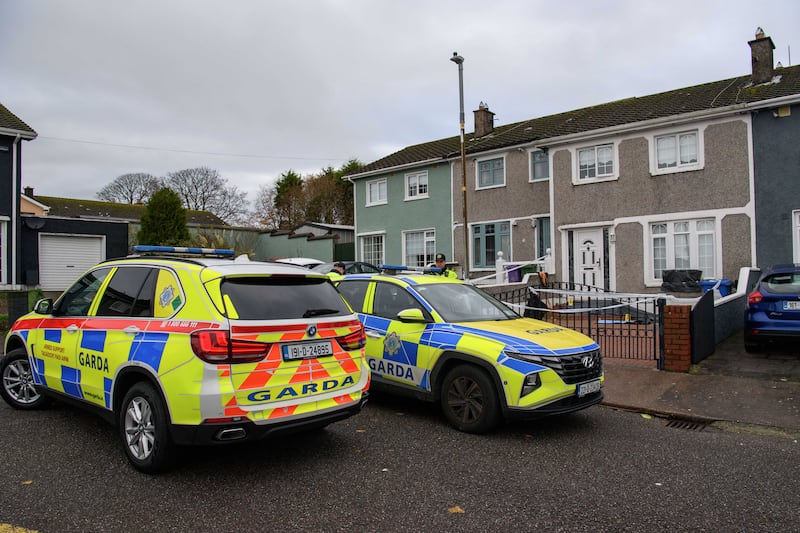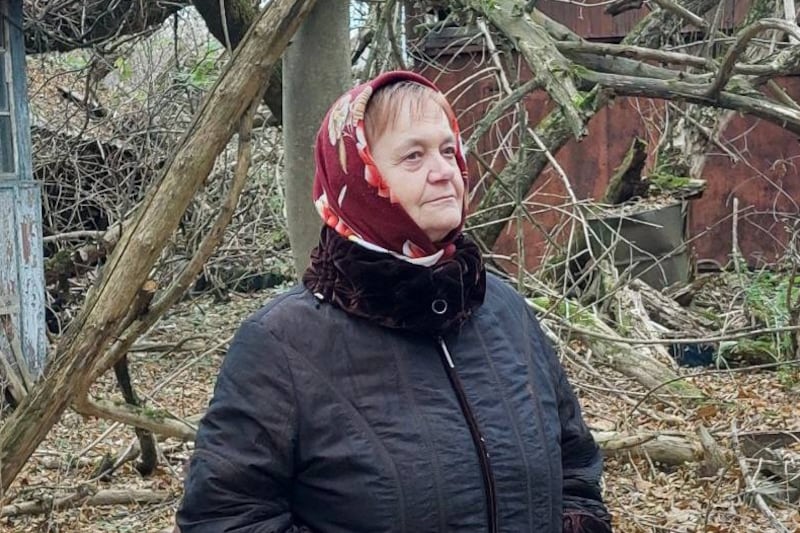Alan Betson
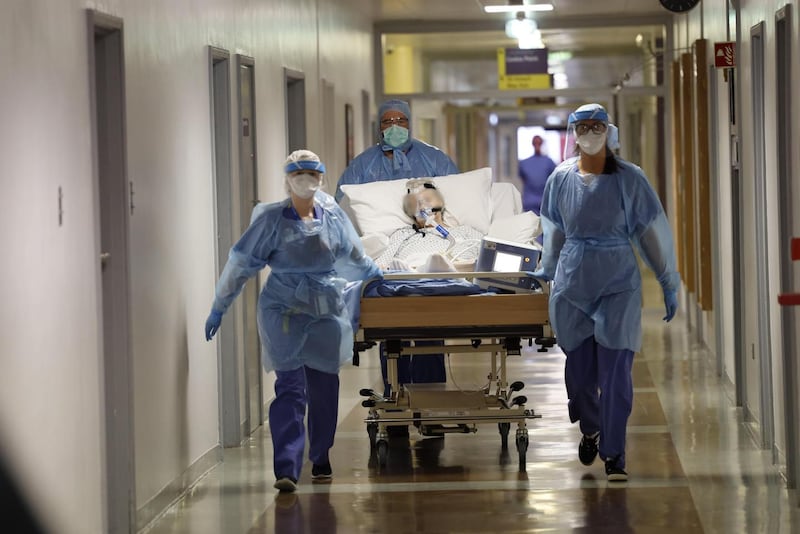
A year that many will be glad to see the back of, 2020 has had more than its fair share of challenges, not least the Covid-19 pandemic. Few will have escaped some form of upheaval or dramatic change in their lives because of it, none more so than the medical staff in Ireland’s hospitals and healthcare facilities. In April, during the first lockdown, I was given the opportunity to photograph, document and record – through the mediums of photography, words and video – the new reality of daily life for patients and staff at St Vincent’s Hospital, Dublin, as they dealt with the coronavirus pandemic.
The access-all-areas visit revealed the radical infrastructural and workflow changes that had rapidly taken place. Starting in the emergency department, this extended throughout the hospital dividing most departments into Covid and non-Covid sections. Operating theatres became double occupancy ICU beds. Inter-ward transfers of Covid patients was something akin to a military manoeuvre, complete with security staff.
I think we are all indebted to the healthcare staff throughout the country for their work. They have paid a very high price, some with their lives
Telling this story became a tricky balance of patient confidentiality, and gaining permissions and the trust of patients and staff to portray accurately their new reality. Another fine balance lay in maintaining the quality of the photography and video, while keeping an ear to the facts and figures.
I am indebted to patient Tommy Doran who spoke into my plastic bagged iPhone from the Covid ward while seriously ill with the disease; to the staff who took my GoPro into ICU (which was subsequently disinfected three times over); and to the Butler family who let me join them as they met their mother, leaving the hospital for the first time in two-and-a-half weeks. She had spent four days in ICU recovering from Covid.
I think we are all indebted to the healthcare staff throughout the country for their work. They have paid a very high price, some with their lives.
Laura Hutton
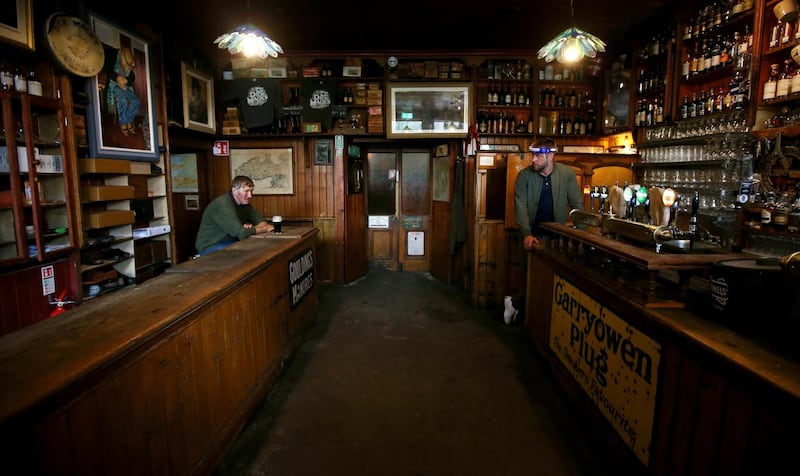
A photographer is never on holidays: it’s a lesson quickly learned. At the height of the pandemic in March, I had booked a few nights away on the Great Blasket Island, as something to look forward to, with a stopover in Dingle beforehand. When it transpired I would be there on Monday, September 21st, the day “wet” pubs would re-open after six months, I had no choice but to plan to spend the day in Dick Mack’s pub “working”.
I was supposed to travel to the Blasket on the Tuesday but on Monday morning I received a call to go early, as the weather was on the turn. By that stage I had already arranged access to the pub, for the doors-opening moment at 12pm.
With the bar on either side leading the eye to both subjects, and with each one lit by overhead lights, the photo has a nice symmetry and feel to it
I explained the situation to my hosts on the Island, and they graciously arranged for me to travel at the very latest opportunity, but I would still have to get to Dunquin Pier by 1.30pm.
The pier is half an hour from Dingle, which left me an hour to get the pictures and get them sent to the paper – no bother, I thought. Only by 12.25pm not a sinner had turned up for their first pint. Panic and despair was beginning to set in when owner Finn MacDonnell (right) walked through with Seamus Ó Grifín and a knowing smile. Seamus agreed to have his first sups documented and that was that. His face and the location did the work.
After taking the shots of him enjoying his pint I stepped right back and let them chat. This was the last shot I took and the one that really got across the new pub experience, with Finn keeping his distance and wearing the visor. It was taken at ISO 2500, F3.2 at 1/160 of a second, due to the darkness of the interior, and how far from the window Seamus chose to sit, but I couldn’t have composed it better if I’d tried. With the bar on either side leading the eye to both subjects, and with each one lit by overhead lights, it has a nice symmetry and feel to it.
I just about made it to Dunquin in time for the boat, and on the return journey got to stop back in Dick Mack’s for a pint or two of their own Dingle stout. I hope to get back there soon.
Bryan O’Brien
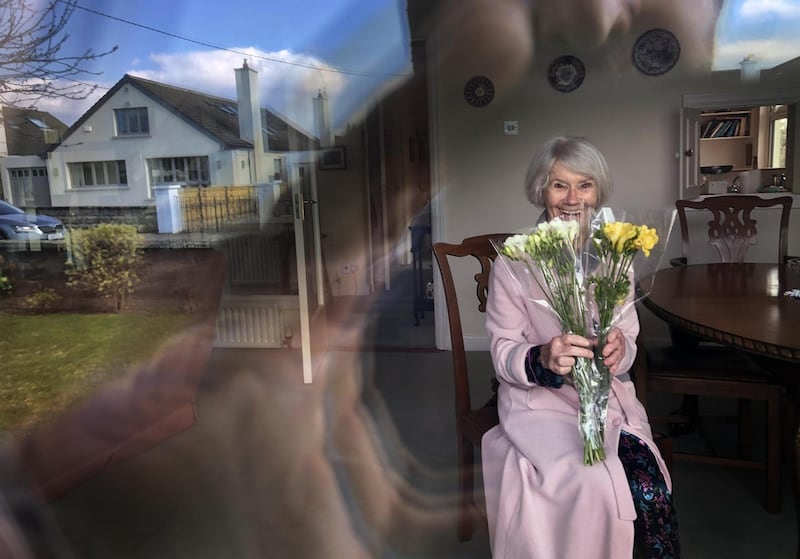
I wouldn’t compare my mother-in-law to Margaret Thatcher, but both have the distinction of appearing in a page-one newspaper photograph wearing a dressing gown. The Iron Lady was pictured outside the Grand Brighton Hotel after the 1984 IRA bombing. My mother-in-law Ellen Creed appeared on the front page when I photographed her at home in Dublin in March.
It was Mother’s Day. My wife Louise had brought supplies for her parents, and freesias, for her mum. We left everything on the front door step, and stood back as Ellen answered in her housecoat. Covid-19 and cocooning was new to us. There was still a bit of surreal novelty about it all.
The photo was used across five columns on the front page. It looked terrific, and Ellen and Dermot's phone rang all day with good wishes
My father-in-law, Dermot, had been hospitalised and recently discharged, and he was resting. Ellen, who had been unable to visit, was extremely relieved to have him home again, and she reported on his progress. She was more cheerful than she had been in days, even a little giddy.
I thought I should take a photo to send to my wife’s four sisters. I tapped on the window, where Ellen was waving us goodbye. To conceal reflections I put the camera right against the glass, so that the portion of the frame with Ellen in it was nice and clear.
There was a kind of incongruity about it all: a lady holding flowers, but sitting on her own on a day that usually is one of togetherness, a day when mums should be surrounded by kids and grandkids.
The idea of photographing someone through glass was novel. Since then, unfortunately, we’ve seen thousands of images of people behind glass and perspex, many of them in difficult situations.
I rang Ellen to make sure that she was okay with me sending it to the paper. A lot of photographs we take don’t make the page for various reasons, and subjects are then disappointed. When you’re fond of someone you don’t want them to experience this disappointment, so I played it down, while keeping fingers crossed.
The photo was used across five columns on the front page. It looked terrific, and Ellen and Dermot’s phone rang all day with good wishes.
Dara Mac Dónaill
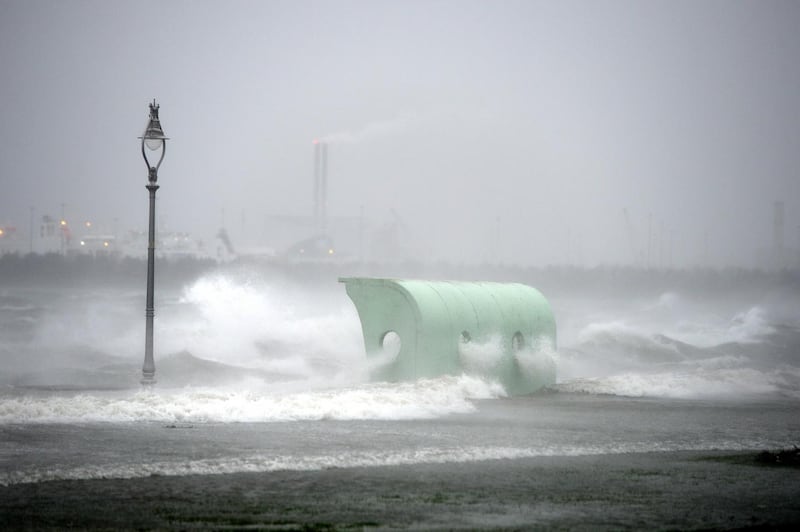
This picture was taken in January 2020, when Storm Brendan was lashing the coast. During such extreme weather events, photographers will routinely visit coastal areas in search of images that capture the force and severity of the storms, and the damage caused.
Previously I have photographed the coast at Clontarf in Dublin, when the sea breached the walls and flooded the promenade, but on this occasion the sheer force of the wind at high tide, drove the powerful waves crashing against the shelter. As I stood there I noticed the sea came through the porthole. I realised this would make a stronger image, and was anxious to capture it before the conditions changed.
I have often sat in the shelter on sunny days, feeling the warmth on my face. Looking at this picture it was hard to imagine anyone sitting in that same spot
The weather was atrocious, my waterproof clothing was no longer effective, I was freezing and soaked right through. Of greater concern to me was the equipment. My cameras were misfiring, I was frustrated and missing shots, I had to remove wet batteries and wipe them down in the hope that the camera would last until I captured what I needed.
As soon as I was finished, I drove straight back to dry off and change my clothing. As I downloaded the images back in the warmth of my home, I was pleased with this particular photograph.
I have often strolled in that area and sat in the shelter on sunny days, feeling the warmth on my face. Looking at this picture it was hard to imagine anyone sitting in that same spot in such contrasting conditions.
It would have been harder still to imagine what lay ahead for the country, and the world, as we battled the Covid-19 pandemic, and all of its subsequent challenges and consequences.
You can buy copies of these and other Irish Times images here












